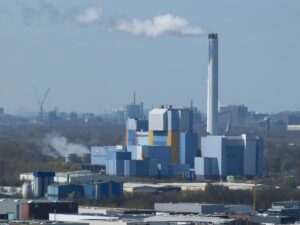Case study: Optimization of heavy metal precipitation with the aid of the special flocculant
Initial situation and problem definition
In a waste incineration plant, the wash water of the flue gas scrubber was treated with a heavy metal precipitant that is classified as toxic. Although the heavy metals were reliably removed from the wash water, the critical parameter was the mercury content.
The customer’s motivation to change products was the prospect of possible cost savings. Another objective was to simplify the precipitation process from two to one precipitation stage.

Concept of Inwatec
INWATEC’s proposal was based on switching from the previously used product to INWATEC’s special flocculant. The aim of the trial was to achieve either the same or technically better results with small quantities of the new product. In February 2020, an operational trial with our special flocculant was started in this waste incinerator.
Results
The feed concentrations of special flocculant were significantly higher at the beginning of the trial and were subsequently reduced in cooperation with the waste incineration laboratory. The reduction of the product dosage was carried out until an optimal result was achieved with regard to the mercury value.
The results of the experiment can now be summarized as follows:
- The precipitation of heavy metals works at least as well with INWATEC’s special flocculant as with the competitor’s product,
- The mercury content after precipitation could be permanently reduced by half,
- The amount of heavy metal precipitant used was reduced by switching to the special flocculant,
- Unfortunately, it was not possible to convert the precipitation process to a single-stage precipitation process, as the process proved to be too unstable.












